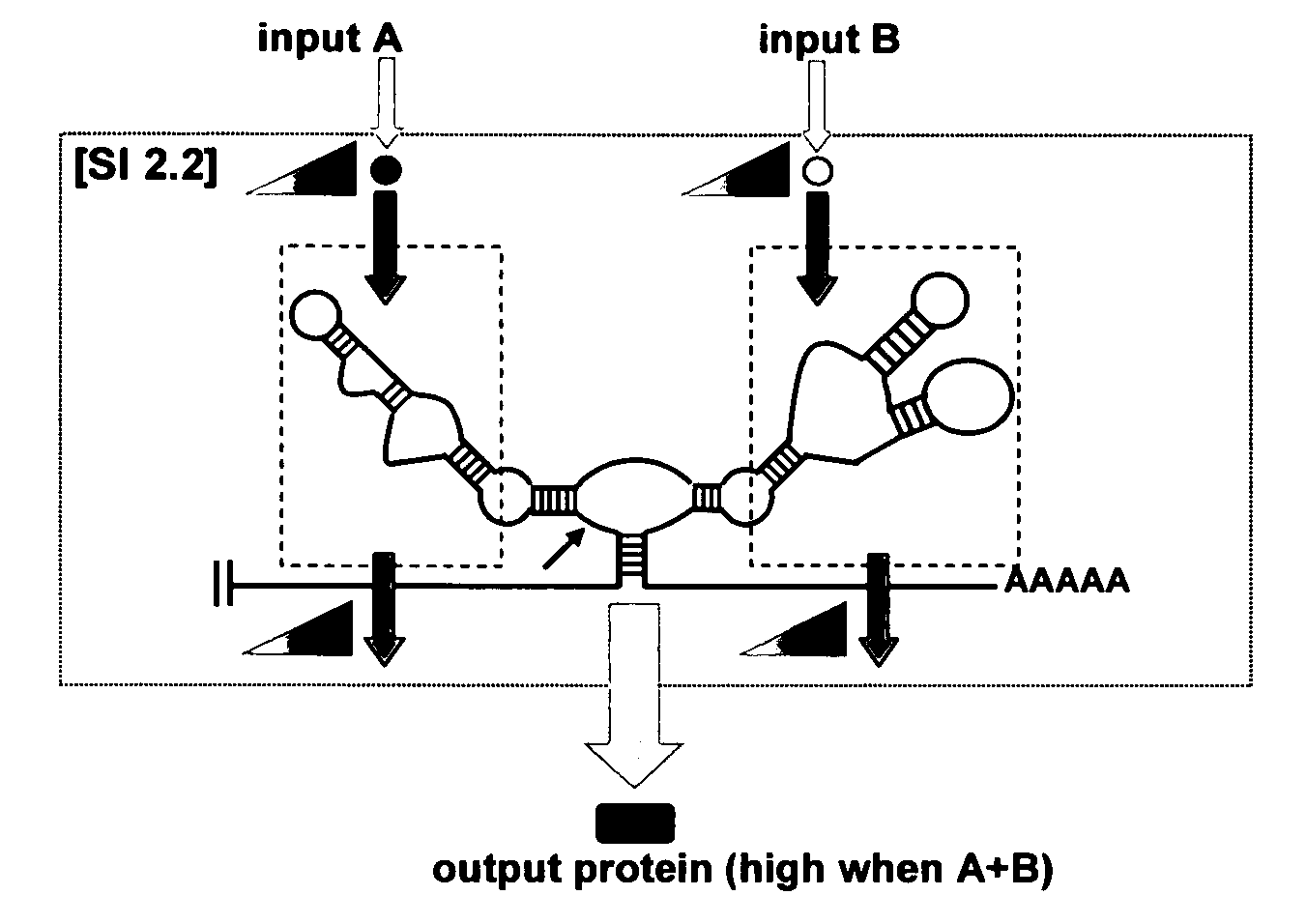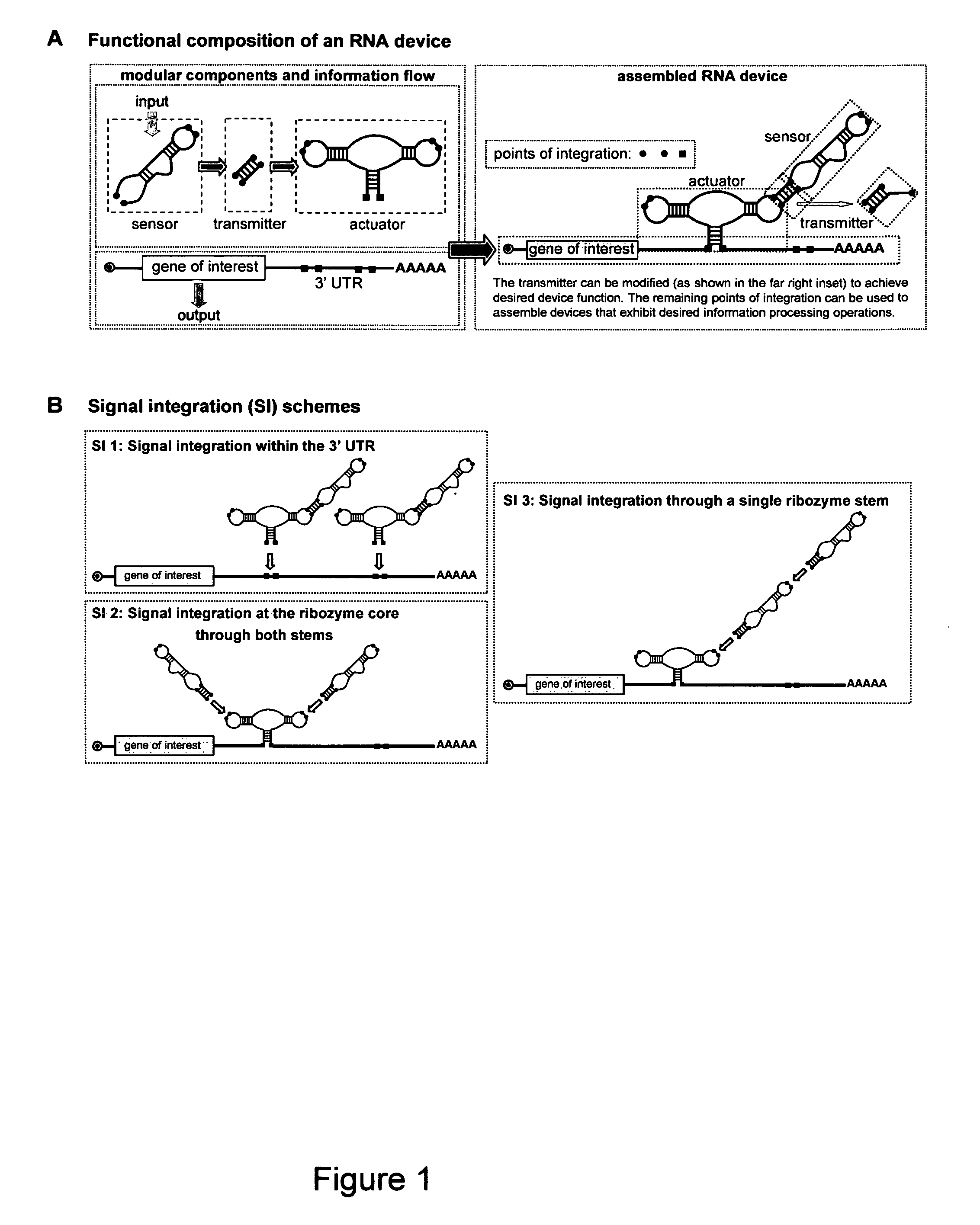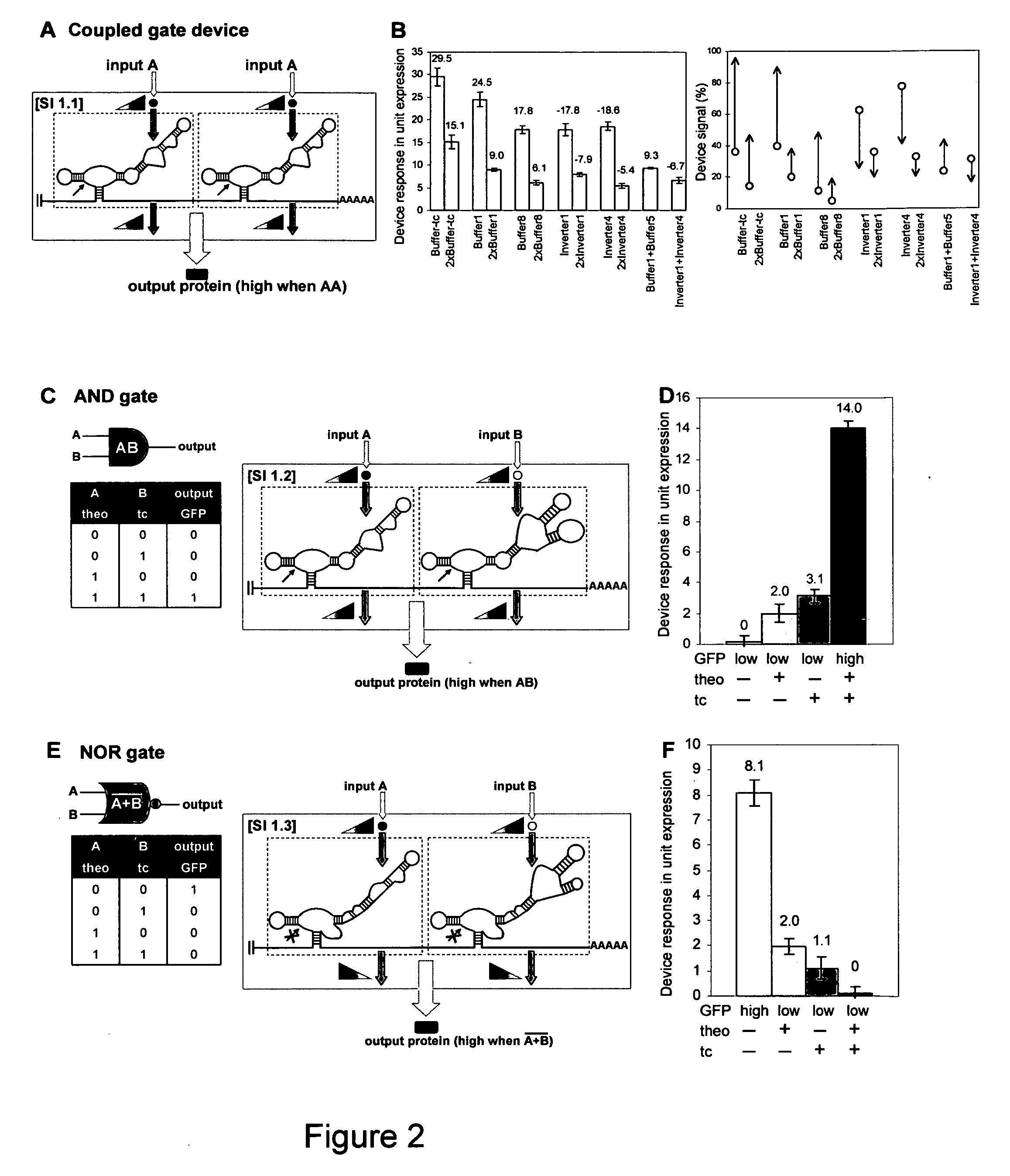Higher-order cellular information processing devices
- Summary
- Abstract
- Description
- Claims
- Application Information
AI Technical Summary
Benefits of technology
Problems solved by technology
Method used
Image
Examples
example 1
Higher-Order Cellular Information Processing with Synthetic RNA Devices
[0273]Applicants provide herein a framework for the construction of RNA devices based on the assembly of three functional components: a sensor component, made of an aptamer; an actuator component (such as one made of a hammerhead ribozyme); and an information transmission domain (or simply “a transmitter component”), made of a sequence that couples the sensor and actuator components. The resulting devices distribute between two primary conformations: one in which the input cannot bind the sensor, and the other in which the input can bind the sensor as a result of competitive hybridization events within the transmitter component. Input binding shifts the distribution to favor the input-bound conformation as a function of increasing input concentration and is translated to a change in the activity of the actuator. In the context of a ribozyme-based system, a “ribozyme-active” state results in self-cleavage of the r...
example 2
RNA Device Response Properties and Standards in Data Presentation
[0322]There has been significant effort directed to the characterization of natural and engineered RNA devices. These efforts have resulted in important descriptions and demonstrations of RNA devices; however, the work is often reported through different metrics and standards. Standard means of reporting the characterized device properties are needed to accurately evaluate, compare, and appreciate the functional properties of the diverse RNA devices that have been developed or will be developed.
[0323]The RNA device properties that characterize the performance of a device include output swing (Rd, absolute difference of the dynamic range; here reported as device response), output fold induction or repression (Sd,L / Sd,0, ratio of the dynamic range), baseline expression (Sd,0, expression activity in the absence of input ligand; here reported as output basal signal), and input swing (input concentration over which device o...
example 3
Predicted and Observed Response Properties of Coupled Single-Input Gates
[0327]Coupled single-input gate devices (SI 1) are composed of single-input gates that are expected to act independently. Independent function of the single-input gates results in several predictions, regarding the response properties of such coupled gate devices relative to the single-input gates. However, the predicted changes in the device response properties were not shown to be exhibited by the naturally-occurring functional counterpart (S11), and are examined here for the synthetic devices.
[0328]The first predicted property of a coupled single-input gate device is that it will exhibit decreased basal output signals from the single-input gate. The expected decrease in basal output signal can be predicted from the single-input gate responses and follows a straightforward probability determination that both gates are in the ribozyme-inactive state (requiring AND behavior):
pd=P1*p2
[0329]where p is the fractio...
PUM
| Property | Measurement | Unit |
|---|---|---|
| Concentration | aaaaa | aaaaa |
| Flexibility | aaaaa | aaaaa |
Abstract
Description
Claims
Application Information
 Login to View More
Login to View More - R&D
- Intellectual Property
- Life Sciences
- Materials
- Tech Scout
- Unparalleled Data Quality
- Higher Quality Content
- 60% Fewer Hallucinations
Browse by: Latest US Patents, China's latest patents, Technical Efficacy Thesaurus, Application Domain, Technology Topic, Popular Technical Reports.
© 2025 PatSnap. All rights reserved.Legal|Privacy policy|Modern Slavery Act Transparency Statement|Sitemap|About US| Contact US: help@patsnap.com



